Eating the Forest: An Intro to Mushroom Log Cultivation
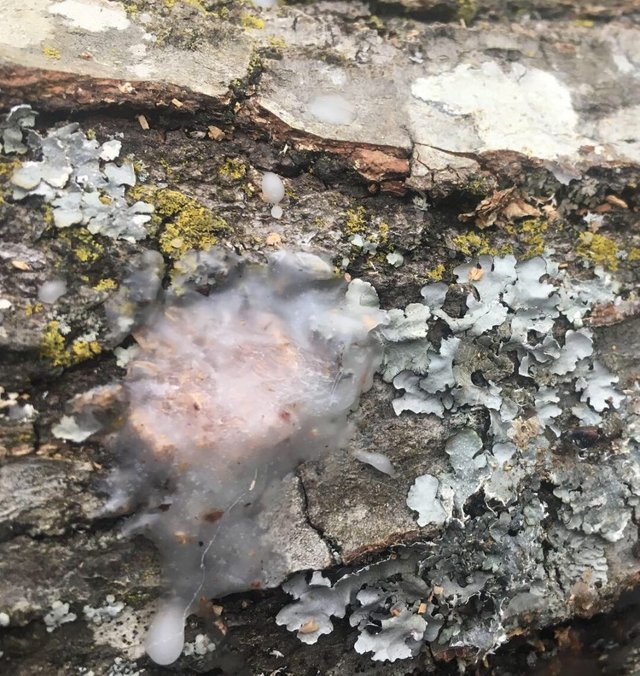
A finished mushroom log complete with a hole filled with mushroom spawn & covered in a protective wax
This spring we’re back at mushroom cultivation. We took last year off but we simply had to plug more logs this year. For us the cultivation of edible and medicinal fungi represents one of the most viable and sustainable ventures on our homestead. By harvesting trees that do not present the healthiest of traits (crooked, weak or overcrowded) we are in fact favoring the overall succession of a resilient and balanced ecosystem. In doing so, we also get the chance to turn that biomass into feedstock for delicious mushrooms.
The mycoscape of any ecosystem is infinitely fascinating and diverse. There are many levels of intensity ranging from foraging wild fungi to cultivating in highly regulated environments. Log cultivation lies somewhere in the middle.
By harvesting dormant trees, we are ensuring maximum food availability for our preferred species of fungi, in this case nameko and shitake. When trees are actively growing much of the energy is allocated to growing leaves and fruit if applicable. Dormancy represents a time of rest and concentration of resources for the trees, which is a perfect time to extract dense stores of energy.
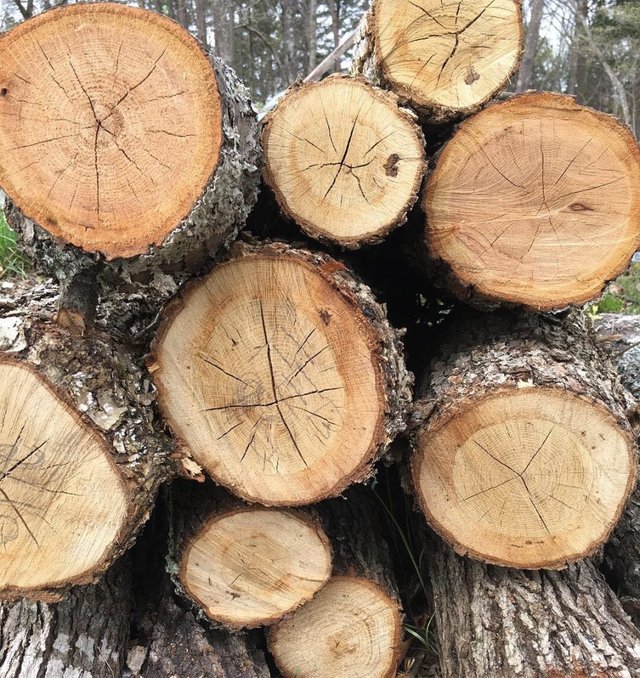
White Oak Logs for Shiitake
Preparing for winter means storing up the resources that were used for photosynthesis during the busy summer months.
Trees synthesize sugars from sunlight and water and store them in their cell. These carbohydrates are what we’re after as mushroom cultivators as we’re looking to turn them into mushrooms. From the time of leaf drop (autumn) to bud break (spring) is an ideal time to harvest most species for log cultivation.
Fungi has a unique and amazing ability to digest difficult to process substances such as cellulose and lignans produced by trees. Using external sets of “teeth” to digest their food, mushroom exude enzymes and other compounds to break down complex carbohydrates in order to make them digestible. In the greater scope of things this has remarkable implications, enabling ecosystems to cycle nutrients efficiently. For us this means we can capitalize on this miracle and turn wood into highly nutritious fungi.
We are honored to steward 15 acres of woodland. Within this land, there are many crooked or densely spaced trees or ones that need to be thinned to open up areas for higher productivity. This year that means cutting abundant oaks in favor full sun exposure to our forest garden site. We have planted a diversity of food producing treea that yield best given full sun including apples, Asian pears, European peas, paw paws, chestnuts and many others. Bringing this area in production means taking out some of the wild species and creating the disturbance needed to aid in the succession of an edible forest garden. In doing so there is the added bonus of many trees that can be used for lumber, firewood or mushroom cultivation.
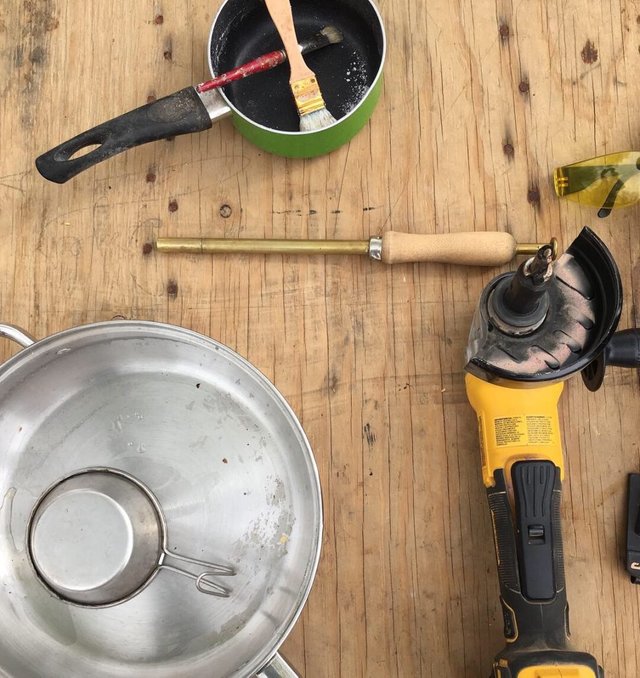
Tools of the trade.
Which logs suited to mushroom cultivation depends on the species and condition of wood and well as species of mushroom.
In general most cultivated mushrooms prefer deciduous trees (hardwoods). The most commonly log cultivated mushrooms are shitakes, but there exists a wide range of options depending of tree species available and climate. Even within shitakes there exists a wide-ranging diversity of strains. Some favor cooler conditions for fruiting while others prefer hotter. This year we have chosen a wide range fruiting shitake called Beltane as well as truing nameko mushrooms for the first time.
The basics of any log cultivation are the same: cut while dormant, allow a short rest period, inoculate, run and fruit. Sounds simple enough but there is a lot to consider.
Any trees that you may plan to inoculate should be healthy and disease free. Any compromise may lead to complications later on. We choose trees that don’t present ideal characteristics such as straight growth, symmetrical branching patterns and overall vigor. In doing se we are favoring a more resilient ecosystem by culling out undesirable traits. We don’t want to inoculate any diseased trees as the goal of mushroom cultivation is to select to colonizing organism, not compete with existing species.
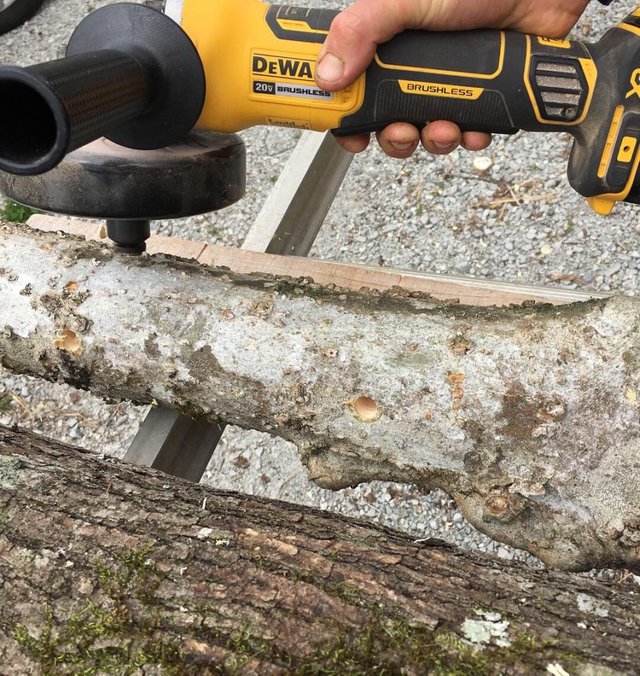
Angle Grinder Drill bit makes the task of drilling uniform holes in the logs quick & enjoyable
Each species of mushrooms had its preferred food, but many are adaptable. Take for example the two species we are working with this year; shitakes tend to favor oaks, and nameko prefer cherry (but also will yield on mulberry and hackberry). Nothing is hard and fast, but years of human experimentation narrowed things down. It’s best to properly identify and mark trees the season before (with the aid of leaf and possibly fruits) that may be ideal for harvesting for mushroom logs.
Mushroom logs for most applications should be easy to handle, yet large enough to maintain optimum moisture levels and present an appropriate ratio of heartwood to sapwood. This is commonly found in logs 30-40” in length and 4-8” in diameter. Anything larger and it’s simply too large and heavy to handle comfortably. I pushed the upper limits the first year we plugged logs and regret having to handle such large logs.
Once you’re selected the logs, it’s best to harvest them and plan for the logs to rest for 2-8 weeks (sources don’t seem to agree on exact timing). This allows any anti-fungal compounds present in the tree to dissipate before attempting to introduce a desired mushroom species. You can’t wait too long or other competing organism may gain a foothold.
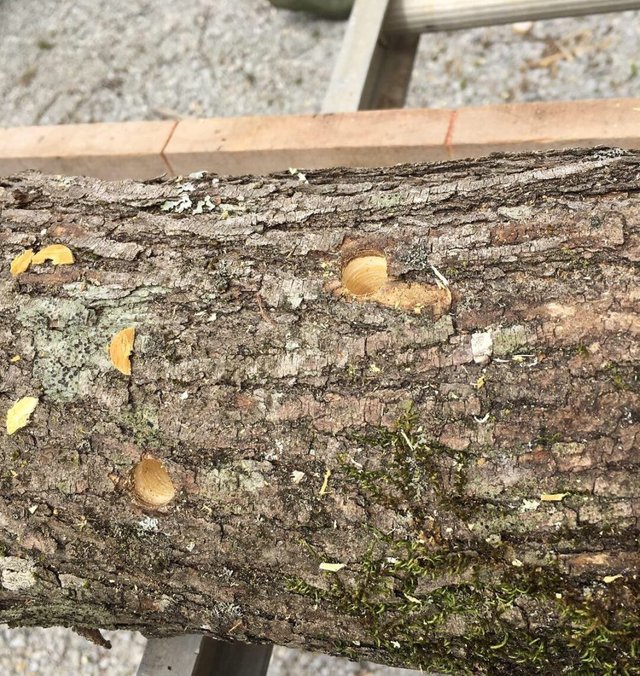
The holes.
There are many ways to inoculate logs, but the most economical method is using sawdust spawn. This does require some specialized tools, but it by far the most efficient method for the small to large-scale cultivator.
Using an attachment for an angle grinder (battery power makes things easier), holes are drilled every 6” within the row and 2” between rows on the logs. These holes are then filled with sawdust spawn with a specialized tool designed and built for this purpose. Finally the spawn is sealed with wax to retain ideal moisture level and exclude competing organisms.
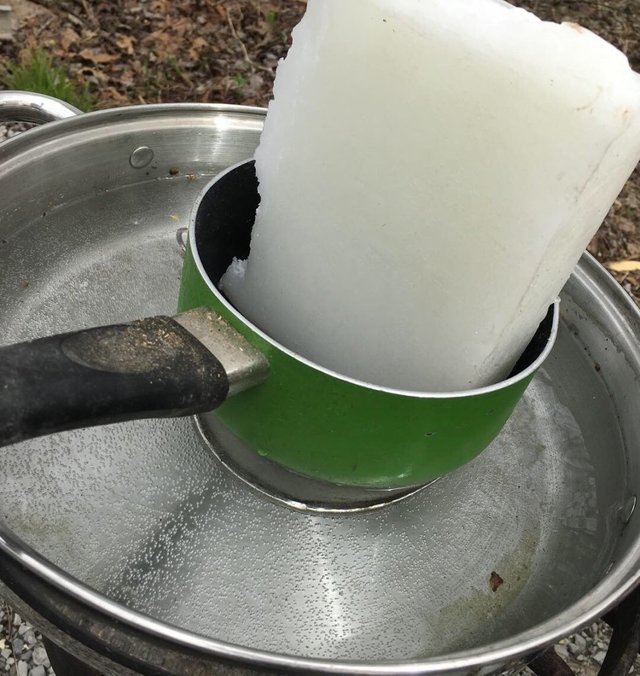
While drilling holes, start melting the cheese wax. We used a double boiler system.
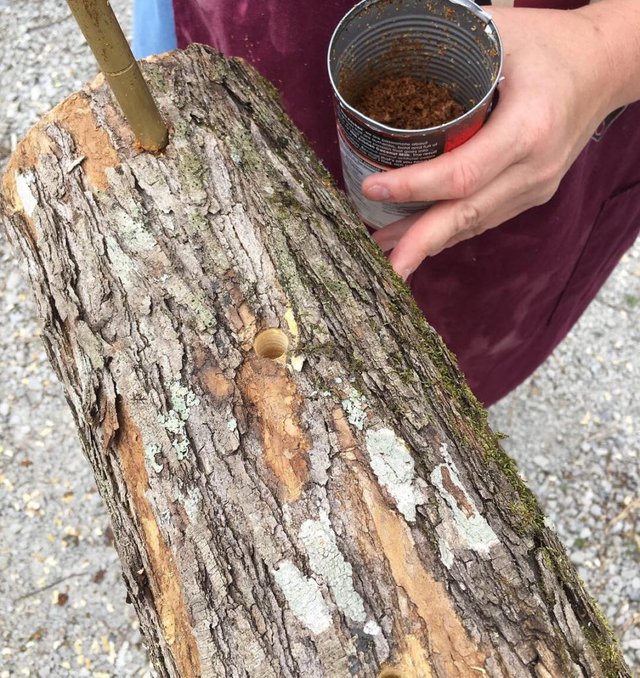
This handy tool makes plugging the spawn easy. Here our friend Michelle fills the holes.
The logs are then set-aside in a shady location to allow for colonization (6-18 months depending of species). The key here is maintaining proper moisture and temperature.
Inoculating in spring assures that temperature will be above freezing and favor mycelia growth. There are many methods and techniques for achieving this and descriptions are beyond the scope of this article. Once colonized, the logs are moved into different location and/or configuration that favors fruiting.
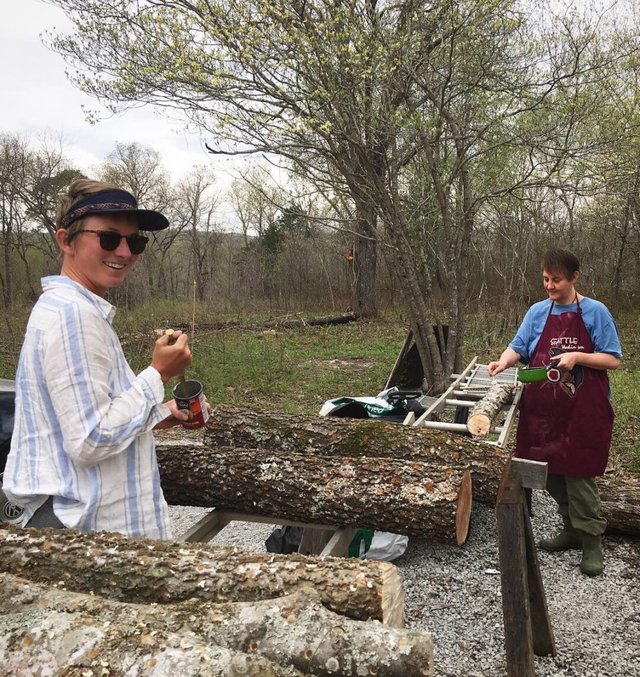
Michelle & I plugging and waxing the holes.
Log cultivation does not require the sterilization of substrate as some other mushroom cultivation methods do, but does require using common sense and a basic understanding of the mushroom reproduction cycle. It is a lower tech method than many mushroom cultivation methods and suits our land and lifestyle well. It offers us a way to cultivate mushroom with relatively low input and investment.
When we are plugging logs, what we’re after is swift and effective colonization of logs with the desired species. We harvest the fungal food (trees) at an opportune time, introduce the desired species, provide ideal condition for mycelia reproduction and set in motion the conversion of wood into mushrooms.
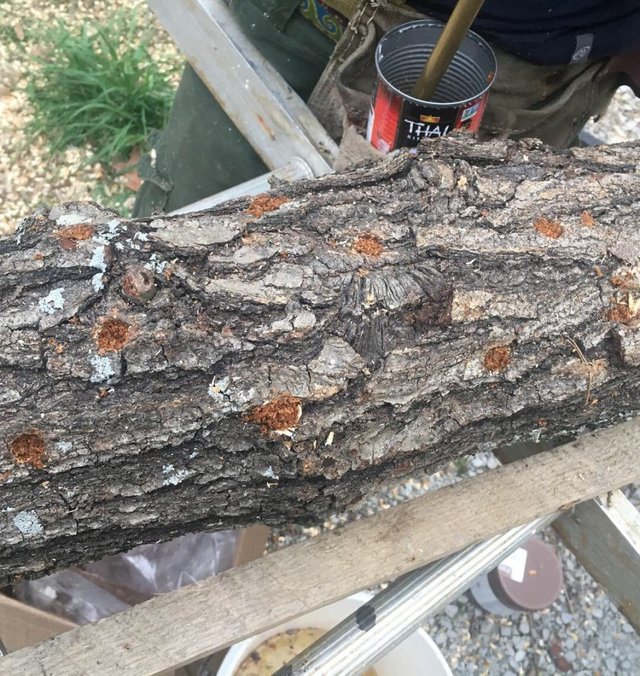
All of the holes filled! The last step is the first picture of the article which includes waxing the holes to protect them from insects, birds and other organisms.
To keep things simple, what we’re after is harvesting healthy trees (but not high valuable timber such a saw or veneer logs) in an effort to improve the health of the forest and convert these thinning into nutritious, delicious and edible fungi. We’re allying with the natural and magnificent functions of mushrooms, and in doing so are converting wood into medicinal food.
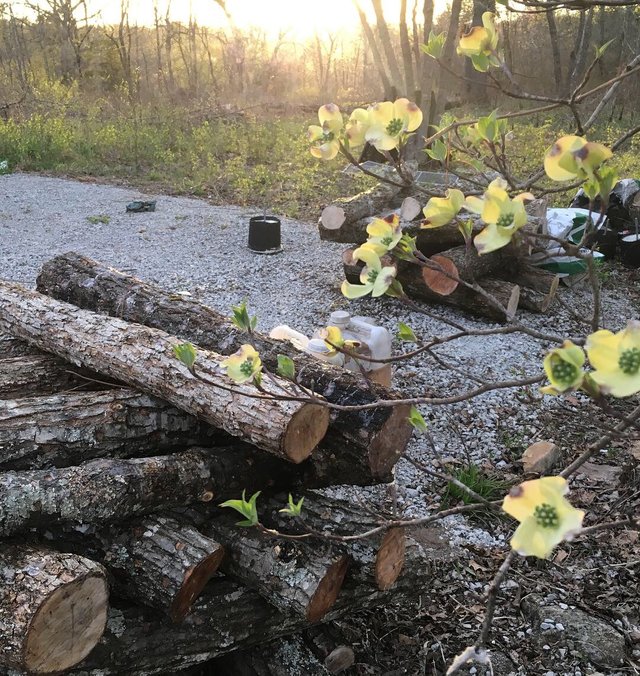
Look out for a step by step video of the process tomorrow!
Posted from my blog with SteemPress : http://www.ozarkmountainjewel.com/2019/04/15/eating-the-forest-an-intro-to-mushroom-log-cultivation/
Will look out for the video tomorrow- what’s the ingredients of the plug?
Posted using Partiko iOS
Sawdust innocated with mushroom spawn! Here’s what we used.
Brilliant - I love how informative life on the Steem Blockchain is. Thank you guys- very interesting. Cheers
Posted using Partiko iOS
You’re so welcome 🌿 one of the reasons we love the blockchain too ☺️✌🏼
Wow, this is super cool! Someday I want to give mushroom farming a try!
Cool! Glad to pass on inspiration 🥰
Thank you so much for participating in the Partiko Delegation Plan Round 1! We really appreciate your support! As part of the delegation benefits, we just gave you a 3.00% upvote! Together, let’s change the world!
Mycology is awesome. And a1-spores was giving away mycology prints as well. Or was.
Posted using Partiko Android
Cool! Spores for the people!!
Posted using Partiko iOS
Yeah somebody didn't like him and nuked his account but he does have some more account so mycology is alive and well
Posted using Partiko Android
You've been visited by @riverflows from Homesteaders Co-op.
What a fabulous inspirational post for any homesteaders wanting to get into grow your own funghi - I'm in! Been wanting to for ages! Thanks for sharing it with us all!
A community marketplace of ethical, handmade and sustainable products available for STEEM, SBD (and USD): https://homesteaderscoop.com
follow: @homesteaderscoop
thanks dear! ini did a really stellar write up on this one <3 xoox
Love the dogwood blossoms... :))
oh me too!! so elegant... creamy... just absolutely divine!
To listen to the audio version of this article click on the play image.

Brought to you by @tts. If you find it useful please consider upvoting this reply.
Hi @mountainjewel!
Your post was upvoted by @steem-ua, new Steem dApp, using UserAuthority for algorithmic post curation!
Your UA account score is currently 4.906 which ranks you at #1264 across all Steem accounts.
Your rank has improved 2 places in the last three days (old rank 1266).
In our last Algorithmic Curation Round, consisting of 220 contributions, your post is ranked at #20.
Evaluation of your UA score:
Feel free to join our @steem-ua Discord server
Nice i hope you get a good harvest.
Posted using Partiko Android
thanks!!!! :)
Are all the plugs shiitake? I find white summer oysters are pretty hearty for plugs.
Posted using Partiko Android
shiitake & we tried nameko this yr too. we get oyster logs luckily from spent loaves we pick up from a nearby mushroom farm. yummy!